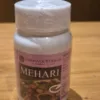Kutaja
|
Botanical Name |
Holarrhena Antidycentrica |
|
Family |
Apocynaceae |
|
Sanskrit |
Kalinga, Girimallika |
|
English |
Kurchi |
|
Hindi |
Kuda |
|
Kannada |
Korachi |
|
Malayalam |
Kodagapala |
|
Telugu |
Kodisepala |
|
Tamil |
Veppalai |
|
Marathi |
Kuda |
Distribution
Common in tropical parts of india and in sub himalayan tract.
|
Parts Used |
Bark, Leaves, Seeds, Flowers |
|
Dose |
Churna:3-6gm, Kashaya:50-100ml |
Chemical Constituents
Conessidine, connessimine, conkurchine, holarrhenine, holarrhimine, holadysamine etc
Ayurvedic Properties
|
Quality (Guna) |
Laghu, Ruksha |
|
Taste (Rasa) |
Tikta, Kashaya |
|
Metabolism (Vipaka) |
Katu |
|
Potency (Virya) |
Sita |
|
Impact (Prabhava) |
Deepana, Grahi |
Pharmacological Action
- Antipyretic: helps in reducing fever and fever due to infections.
- Anti-inflammatory:reduces infalammations of the skin by improving the immunity.
- Antibacterial, antifungal: reduces skin problems.
- Anthelmentic: removes intestinal worms.
- Its grahi property helps in arresting diarrhea and maintains the hydration of the body.
Therapeutic Uses
- Pithatisara: seeds and bark of kutaja are pounded with honey and ativisha is added to it, this combination is taken with rice water.
- Kushta: paste of kutaja is applied externally.
- Jvara: decoction prepared out of kutaja bark is taken along with rice water.
- Shonitarsha: bark powder is given with ghee.
- Bark decoction is made and rock salt is added and can be applied in inflamed joints.
Some of the common formulations
- Kutajarishta
- Kutajavalehya
- Kutaja ghana vati etc




